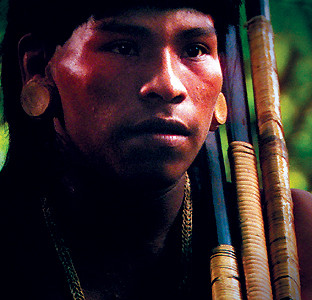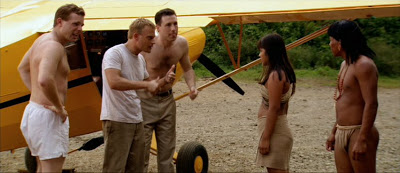Coming from South Africa, I have grown up seeing poverty on my door step. My mother works in a rural area with children affected by HIV; there are homeless at the robots (traffic lights) begging for money to support their families; there is hurt that has built up for years due to our country’s history. There is desperation. So when I arrived in Ethiopia, although poverty is more in your face and street kids can be seen sniffing glue in broad daylight, it was not a big culture shock to see people in desperation. In some ways I had grown so used to seeing people in need that I was no longer affected by it.
Seeing the reactions of other expats was difficult for me as I felt like I had a heart of stone and no compassion. Familiarity had bred contempt.
On Friday night I watched the movie The end of the spear. It is a true story told from the view of Steve Saint. Steve’s father (Nate Saint) was one of five missionaries (along with Jim Elliot) who was killed at the end of the spear by the Wodani tribe in Ecuador.

Nate and the other missionaries had exchanged gifts with the natives for several months prior to flying in and meeting them in person, when they were attacked and killed. Before leaving on that day Steve asked his father “If the Wodani attack, will you defend yourself? Will you use your guns?” to which Nate responds “Son, we can’t shoot the Wodani, they are not ready for heaven, we are”.
This line really struck a nerve in me and brought me to tears. I am ready for heaven but there are so many people who are not. People who we see every day. People who are desperate but who we are so used to seeing that we no longer really see them. Are they ready for heaven?

Two years after the men were killed, the wife and sister of two of the missionaries that were murdered returned to live in the same village as the tribesmen who killed their loved ones. They continued to share the gospel.
At the end of the film, Steve returns to Ecuador with his wife. He finds out that Mincaye, one of the tribesmen who he had gotten to know well as he grew up, was actually the one who killed his father. According to the Wodani, it would have been expected that Steve avenged his father’s death by killing Mincaye. In a heart wrenching scene, we see how broken Mincaye and Steve are after Micaye admits he was the one who took Nate’s life. Steve responds that no body took his father’s life. He gave it.
It is so easy to become complacent and detached from the unreached and we can come up with a million excuses as to why it is like that. But our Father gave His life for them too. Are they ready for heaven?





